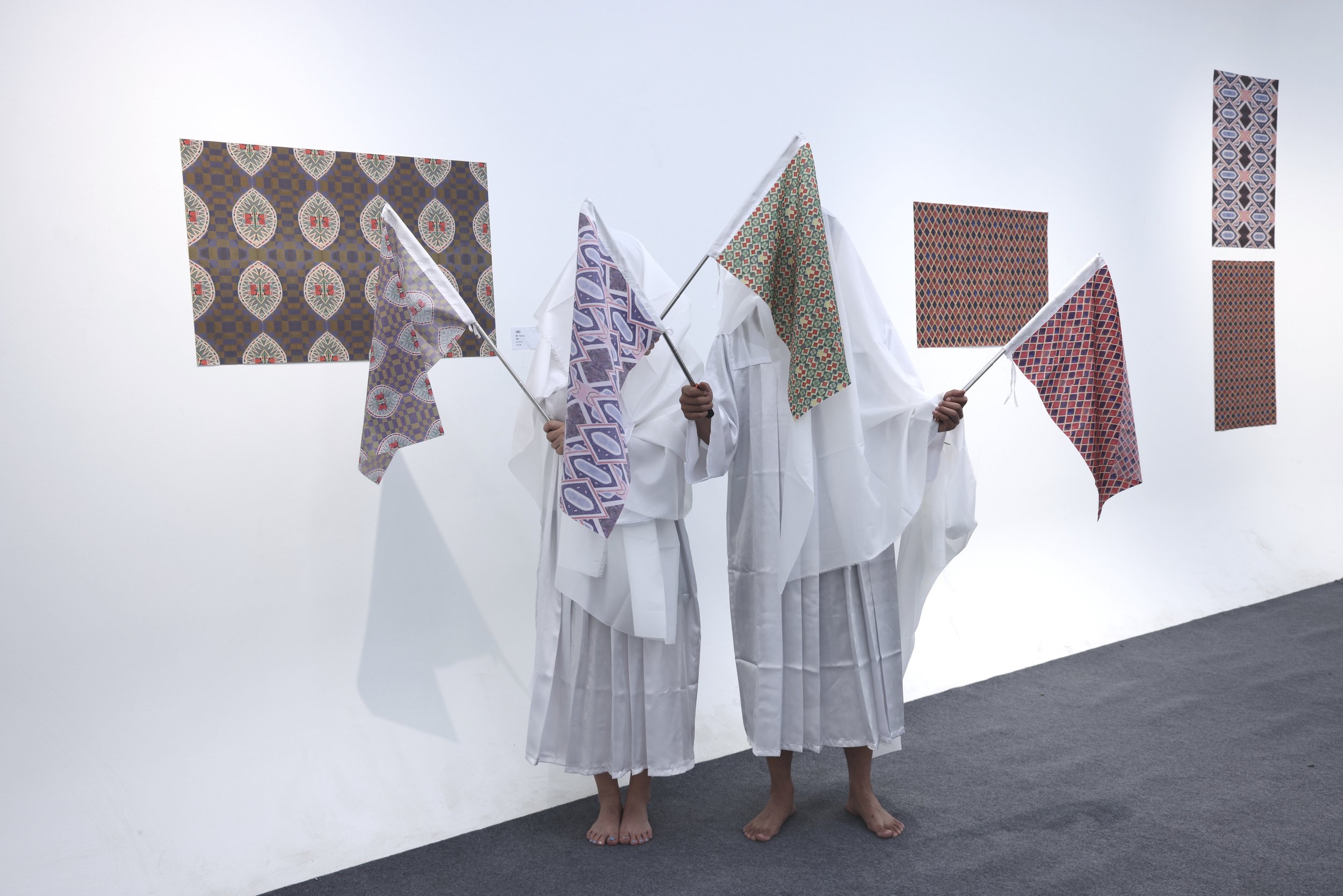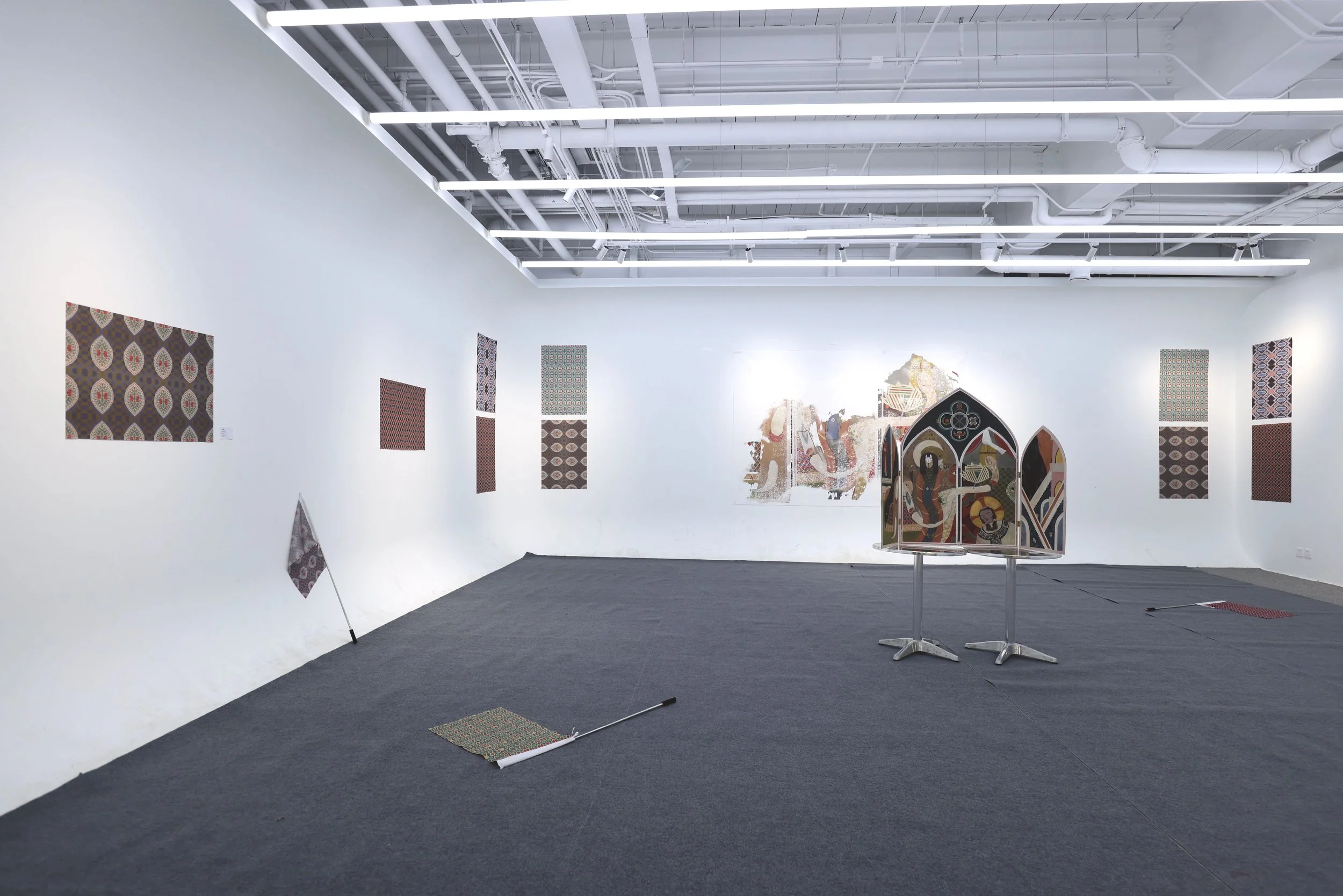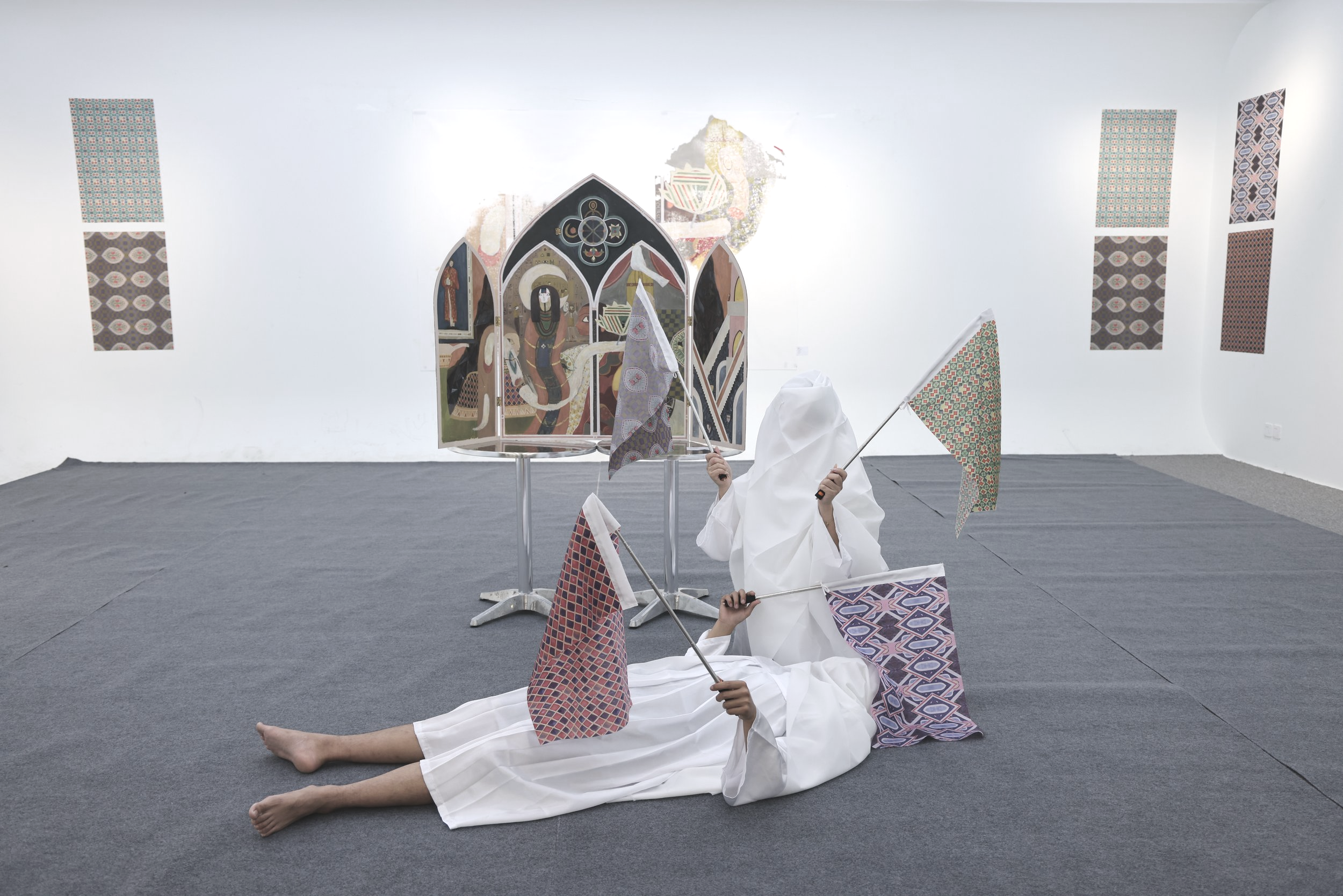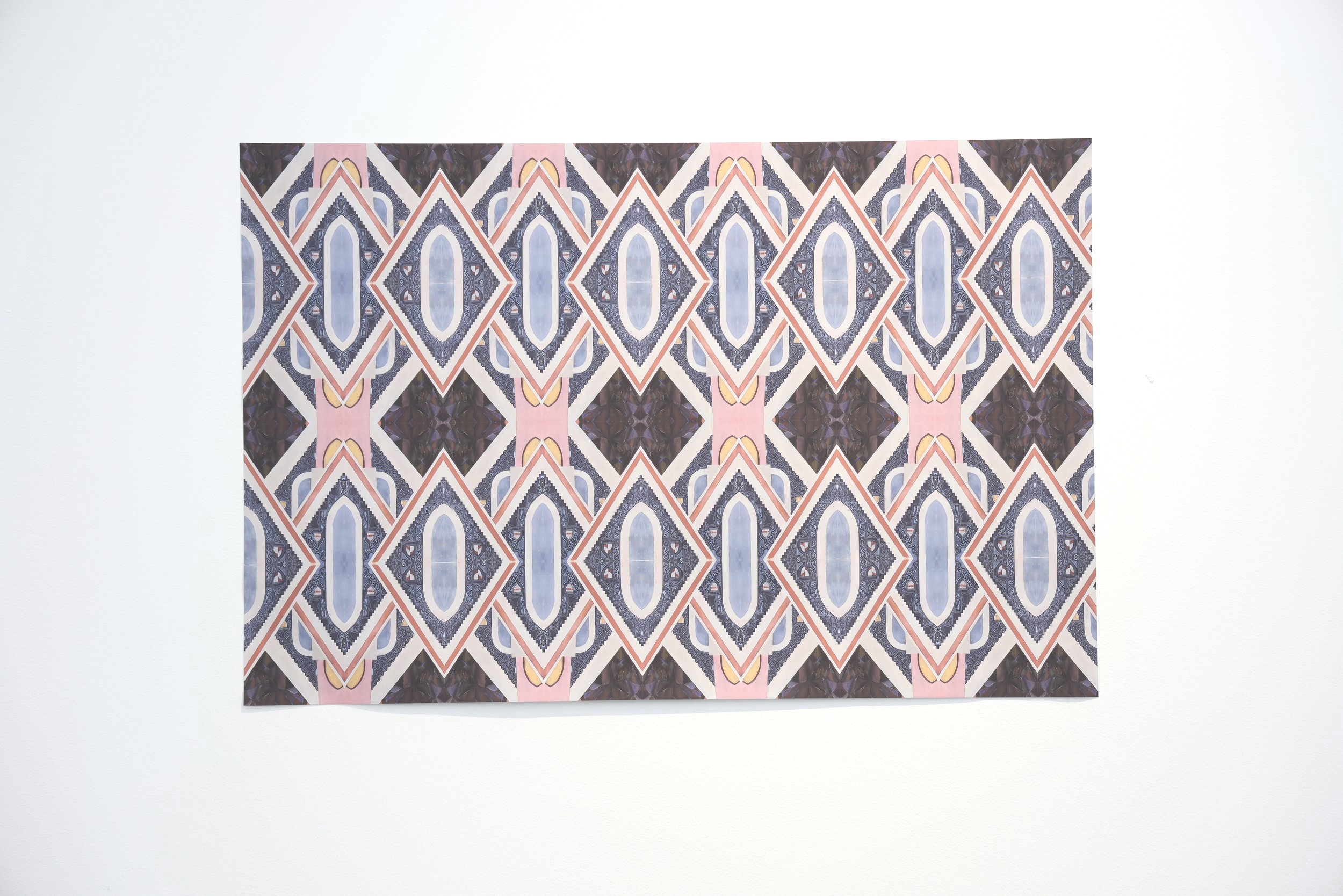
Syncretic Ornament
ARTIST: Zorg Yifan Jing
SOLO EXHIBITION 08/06/2024-12/06/2024
Syncretic Ornament-A Pattern for Those Who Arrive
Syncretic Ornament
08/06/2024-12/06/2024
Syncretic Ornament 2024
Photo by Luan gallery
Syncretic Ornament
Zorg's First Solo Exhibition in China-A Pattern for Those Who Arrive
Luan Gallery is honoured to present Syncretic Ornament, the first solo exhibition in China by London-based artist Zorg (Yifan Jing). This exhibition marks a significant moment in Zorg’s ongoing visual research, developed through long-term ethnographic engagement within a multi-ethnic neighbourhood in East London. Focusing on the convergence of cultural totems, spiritual narratives, and everyday aesthetics, Zorg’s work explores how ornament becomes a living archive of coexistence, negotiation, and regeneration in shared urban space.
Over the course of several months, Zorg conducted extensive fieldwork in a community where residents from across Asia, the Middle East, Africa, and Europe live side by side. Religious and cultural traditions—Buddhist, Christian, Islamic, ancient mythologies—interlace and reshape the local environment. Rather than viewing these as fixed identities, Zorg investigates how they meet, overlap, and transform one another through visual expression.
Central to the project is the artist’s engagement with community members: listening to stories, observing rituals, and collecting symbols embedded in daily life. Drawing inspiration from a particular window motif frequently found in the neighbourhood—a threshold between public and private, inside and outside—Zorg reimagines this architectural element as a compositional frame through which multiple cultural narratives are woven together.
What emerges is not a collage of exotic elements, but a sensitive and complex visual language unique to this community. Over time, residents have contributed to a symbolic system that transcends origin: Buddhist motifs, Coptic crosses, Islamic geometry, Egyptian figures, and folk embellishments appear not as isolated signs but as recombined forms of shared existence. This hybrid ornamentation is visible not only in personal storytelling but also in the façades of local shops, hand-painted signage, domestic interiors, and artisanal crafts. It is a form of vernacular syncretism—visual evidence of how belief, memory, and ornament can coexist and co-evolve.
In Syncretic Ornament, Zorg does not simply document these symbols; he participates in their ongoing transformation. Through layered compositions that draw on community encounters, architectural detail, and ornamental logic, the works presented in this exhibition invite viewers into a shifting cultural landscape—one where visibility is constantly negotiated, and where ornament becomes a method of both storytelling and survival.
By foregrounding ornament not as decoration but as a medium of cross-cultural translation, this exhibition invites reflection on how visual languages form in spaces of encounter. Syncretic Ornament is ultimately a proposition: that ornament can be more than surface—it can be a site of shared meaning, resistance, and becoming.








